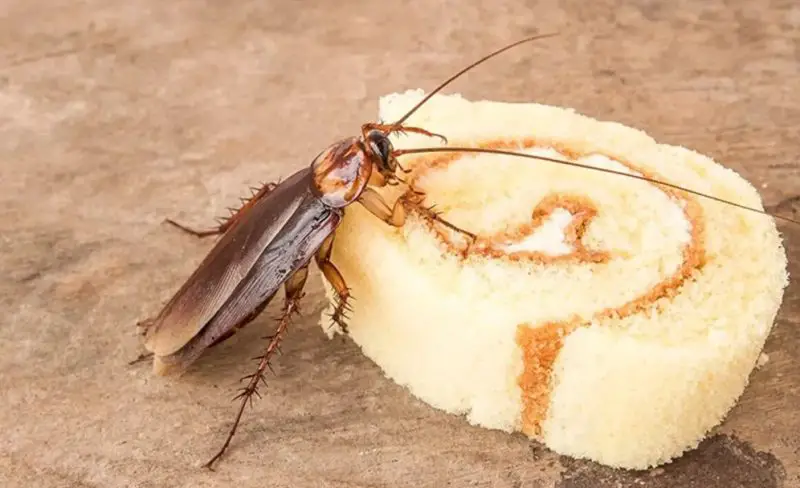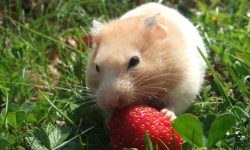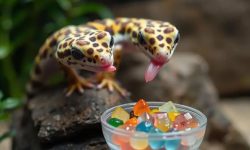Cockroaches are incredibly adaptable insects, thriving in forests, grasslands, tropical environments and—much to our frustration—inside human homes. Their exceptional survival ability is tied directly to their diet. Cockroaches are omnivorous scavengers, meaning they eat almost anything available, from plant material to animal matter. This flexible eating behavior allows them to thrive in places where other insects cannot.
In nature, cockroaches feed on decaying organic matter, fungi, fallen leaves, fruits and even small dead animals. But when they move indoors, their diet becomes even more varied. They consume crumbs, grease, leftovers, paper, glue, soap and many household materials. Their ability to digest both plant and animal products makes them extremely difficult to eliminate since food sources are almost everywhere.
This article explores 20 foods cockroaches are attracted to, explaining why roaches eat them, how they find them and how these foods influence their survival.
Understanding the Cockroach Diet

Cockroaches are among the most opportunistic feeders in the insect world. Their diet includes organic matter in nearly all forms, allowing them to survive in conditions where food sources are scarce or inconsistent. This flexibility is partly due to their strong digestive enzymes and gut microbes that break down tough plant fibers, animal fats and even materials humans consider inedible. Their ability to adapt makes them successful in both natural and urban environments.
In the wild, cockroaches commonly feed on decomposing leaves, rotting logs, fungi and dead insects. These foods provide moisture and nutrients essential for survival, especially in humid tropical areas where cockroaches thrive. Their natural diet helps recycle nutrients in ecosystems, acting as tiny but important decomposers. Even in forests, cockroaches serve ecological purposes by breaking down organic matter and improving soil health.
When cockroaches enter homes, their diet expands dramatically. Human environments provide abundant food sources, including crumbs, grease, spilled drinks, pet food and garbage. Cockroaches also consume non-food items like paper, cardboard, hair, soap and glue when necessary. Because their diet is so broad, eliminating food sources requires careful cleaning and proper storage. Understanding what cockroaches eat helps homeowners prevent infestations and maintain more sanitary living spaces.
20 Foods Roaches Are Attracted To
1. Bread Crumbs
Bread crumbs are one of the top attractants for cockroaches because they are soft, easy to digest and rich in carbohydrates. When cockroaches find crumbs on countertops or floors, they gather quickly to feed. Even tiny crumbs invisible to humans provide enough nutrition to support cockroach colonies.
In homes, crumbs accumulate under appliances, furniture and baseboards, becoming long-term feeding spots. Cockroaches use their antennae to detect food particles and return to the same locations repeatedly. This behavior makes crumb management essential to preventing infestations.
Bread contains sugars and yeast, both of which cockroaches readily metabolize. Because crumbs linger for days, they become reliable food sources, allowing cockroaches to reproduce steadily in indoor environments.
2. Grease and Fat
Grease and fat are among the most irresistible food sources for cockroaches. They contain concentrated energy that reproducing roaches depend on. Grease may splatter onto stovetops, counters or walls during cooking, becoming available for roaches long after the meal is finished.
Even dried grease remains edible for cockroaches. They use their strong mouthparts to scrape through hardened layers and consume the residue. This helps them survive in kitchens where oils accumulate around burners and stovetop grates.
Because grease sticks to surfaces, it becomes one of the hardest attractants to eliminate. Cockroaches exploit greasy areas as consistent feeding stations, making deep cleaning a critical step in pest prevention.
3. Sugar and Sweets
Cockroaches are naturally drawn to sugar because it provides immediate energy. Candies, spilled soda, juice residue and sugary crumbs attract roaches from long distances. Even dried sugar crystals can support survival for extended periods.
Cockroaches have a strong sense of smell that helps them locate sweet foods quickly. Kitchens, dining rooms and children’s play areas are common places where sugary residues accumulate. This makes regular cleaning essential for reducing attractants.
Sugary foods help females produce more eggs, contributing to rapid population growth. Because sugar is so abundant in human environments, it is one of the main reasons roaches thrive indoors.
4. Meat Scraps
Meat scraps offer high-protein, high-fat nutrition that cockroaches need for rapid reproduction. When meat juices spill in trash cans, sinks or floors, cockroaches detect the scent and move quickly toward it. Fresh or decaying meat becomes a powerful attractant.
In natural environments, cockroaches often consume animal carcasses. Their digestive system allows them to break down tissues efficiently. Indoors, the same instinct drives them to leftover meat, bones or fatty residues left after cooking.
Because meat spoils quickly, it also attracts roaches through the smell of decay. This leads to faster infestations if trash is not sealed or disposed of properly.
5. Pet Food
Pet food is a major cockroach attractant because it remains accessible inside bowls for long periods. Dry kibble contains fats and proteins roaches love, while wet food offers moisture and strong scents that attract roaches instantly.
Roaches often feed at night when pets are asleep. They climb into bowls and carry away small food particles. Even spilled crumbs around feeding areas become reliable food sources.
Because pet food is offered daily, it creates a consistent supply that can sustain large roach populations. Storing pet food properly and cleaning feeding areas is essential to discouraging infestation.
6. Pasta and Rice
Cooked pasta and rice are rich in starch, making them appealing to cockroaches. When left uncovered, these foods attract roaches quickly due to their high moisture and soft texture. Even uncooked pasta and rice become food sources when stored improperly.
Cockroaches chew through packaging to reach dried grains. Plastic bags, cardboard boxes and paper packaging are easily perforated by roach mandibles. This makes pantry organization critical for preventing infestations.
Once roaches discover a supply of grains, they leave chemical trails that attract colony members. This creates long-term infestations in pantry areas.
7. Cheese
Cheese attracts cockroaches because of its strong aroma, fats and proteins. Whether in solid blocks or melted form, cheese provides dense nutrients that help roaches grow and reproduce. Even dried cheese residue becomes edible over time.
Roaches detect cheese quickly due to its pungent scent. Pizza boxes, leftover food containers and snack plates often contain trace amounts of cheese, making them frequent roach targets in homes.
Because cheese spoils, the decay process intensifies its scent, drawing roaches from surrounding areas. This makes cheese-based foods particularly important to clean up promptly.
8. Fruits
Cockroaches feed readily on fruits, especially ripe and fermenting varieties. Bananas, apples, peaches, grapes and citrus fruits attract them due to their sugars and moisture. Fruit left uncovered on tables or counters becomes an easy meal.
Roaches also consume fruit peels, cores and discarded pieces in trash cans. As fruit decomposes, it releases stronger scents, attracting roaches more aggressively. They gather around fruit residues, especially in warm climates.
In nature, roaches rely on fruits as seasonal foods. Indoors, fruits provide nutrients that help roaches survive and reproduce quickly.
9. Vegetables
Vegetables—especially leafy greens and spoiled produce—attract roaches due to their moisture content. Roaches feed on lettuce, potatoes, carrots, onions and other vegetables left unprotected or stored improperly.
Decaying vegetables emit a sour odor that roaches detect easily. Refrigerator drawers, trash bins and compost containers often harbor rotting produce that supports roach populations.
Cockroaches use vegetables not only as food but also as hydration sources, helping them survive in dry locations.
10. Paper and Cardboard
Surprisingly, cockroaches can digest cellulose found in paper and cardboard. These materials mimic natural fiber sources like decaying wood and plant matter. Roaches feed on newspapers, cardboard boxes, book pages and packaging materials.
Cardboard boxes are especially attractive because roaches also hide and lay eggs inside them. The combination of shelter and food makes cardboard ideal for nesting.
In cluttered areas such as basements, garages and storage rooms, roaches thrive on paper-based materials, making decluttering essential.
11. Glue
Glue contains organic compounds that cockroaches find nutritious. Roaches consume glue from envelopes, cardboard, furniture joints and wallpaper adhesives. The sticky texture also allows roaches to digest it slowly over time.
In homes, old wallpaper becomes a feeding surface for roaches. They chew through adhesive layers, leaving behind small holes and feeding marks. Roaches also feed on glue in bookbindings and paperbacks.
Because glue sources are widespread and often unnoticed, they support long-term infestations without homeowners realizing it.
12. Soap
Soap contains animal fats, oils and fragrances that attract cockroaches. They nibble on bar soap in bathrooms, kitchens and laundry rooms. Liquid soap residue in sinks and tubs also becomes a feeding source.
Roaches digest soap easily despite its chemical composition. This ability helps them survive in environments where food is scarce but cleaning supplies are available.
Soap consumption is more common in humid areas where bars of soap soften over time, making them easier to chew.
13. Hair and Skin Flakes
Cockroaches feed on human hair, pet fur and shed skin flakes found on floors and carpets. These protein-rich materials accumulate naturally in homes, especially in high-traffic areas or pet-friendly households.
Roaches use their strong mandibles to break down hair strands, chewing them into digestible pieces. They also gather in areas where skin flakes collect, such as corners, carpets and bedding.
Because humans shed skin constantly, these microscopic particles support roach populations even in clean homes.
14. Dead Insects
Cockroaches readily consume dead insects as a natural protein source. In the wild, they feed on decomposing bugs found under logs, rocks or leaf litter. Indoors, they eat dead ants, flies, beetles and other pests.
Feeding on dead insects helps roaches survive in environments with limited fresh food. They gather around spider webs, dark corners and storage areas where insects commonly die.
Dead insects supply essential nutrients that support egg production and colony growth.
15. Feces and Waste
Cockroaches consume animal and human feces because it contains undigested nutrients. In sewers, drains and outdoor environments, feces becomes a primary food source. Indoors, they may feed on pet litter or bathroom waste.
This behavior enables roaches to survive in extremely unsanitary conditions. It also increases the risk of disease transmission when roaches migrate into kitchens or food storage areas.
Because waste is abundant in many environments, it supports large cockroach populations year-round.
16. Mold and Mildew
Mold and mildew serve as natural food sources for roaches living in damp environments. Bathrooms, basements and leaky pipes create moist surfaces where mold grows. Roaches scrape mold layers off walls, tiles and wood.
In nature, roaches feed on fungi growing on decaying logs and leaves. Indoors, mold provides similar nutrients, allowing roaches to thrive even without access to typical food sources.
Mold-eating behavior makes cockroaches more resilient in homes with moisture issues.
17. Leather
Leather contains natural animal proteins that cockroaches consume when desperate for food. Shoes, belts, handbags and furniture become targets when left in humid or poorly ventilated areas.
Roaches chew on the surface of leather items, leaving behind rough bite marks. This often goes unnoticed until damage becomes visible. Leather glue and stitching also provide additional nutrients.
In storage rooms, closets and basements, leather items must be protected to prevent roach feeding.
18. Fabrics and Clothing
Cockroaches sometimes feed on natural fabrics such as cotton, linen and wool. These materials contain trace nutrients and organic fibers that roaches digest when food is scarce. Sweat, food stains and body oils make fabrics even more appealing.
Roaches often hide inside clothing piles, where they remain undetected. They chew small holes that grow larger over time, damaging garments. Laundry rooms and bedroom corners are common feeding locations.
Clothing stored with moisture or stains becomes ideal for cockroach feeding and nesting.
19. Trash and Kitchen Scraps
Trash cans offer endless food options for cockroaches, including leftovers, vegetable peels, meat bones and packaging residue. The humid and enclosed environment inside trash bins supports long-term feeding.
Roaches detect strong odors from trash bags and enter through tiny openings. Even small amounts of waste provide enough nutrition to sustain roach colonies.
Because trash is replenished daily, it becomes a constant feeding ground unless tightly sealed and cleaned regularly.
20. Water and Moisture Sources
Although not technically “food,” water is essential for cockroach survival and plays a major role in where they feed. Roaches gather around leaks, condensation, sinks and drains because moisture helps them digest dry material.
Water allows roaches to metabolize tougher foods such as cardboard and soap. Without moisture, cockroaches die quickly, making hydration a key factor in infestation survival.
By combining moisture and food sources, roaches establish long-lasting colonies in kitchens, bathrooms and basements.
FAQs About What Do Cockroaches Eat
What do cockroaches eat the most?
They eat crumbs, grease, sugar, meat scraps and moisture-rich foods, depending on their environment.
Do cockroaches eat human food?
Yes. Roaches consume nearly all human foods, especially bread, fruits, meat and sweets.
Do cockroaches eat non-food items?
Yes. They can digest paper, soap, cardboard, fabric and glue.
What food attracts cockroaches the fastest?
Sugary foods, greasy residues, and meat scraps attract them within minutes.
Do cockroaches eat plastic?
They cannot digest plastic but may chew it to access food inside containers.
Do cockroaches eat dead insects?
Yes, they eat dead bugs as a protein source.
Why do cockroaches eat soap?
Because soap contains fats and oils that provide nutrition.
Do cockroaches eat hair?
Yes. They consume shed skin flakes and hair strands if needed.
Can cockroaches survive without food?
They can survive up to a month without food if water is available.
Do cockroaches eat pet food?
Yes. Pet food is one of their top attractants in homes.
Final Thoughts
Cockroaches survive by eating a wide range of foods, from human leftovers to decaying matter and household materials. Their extraordinary adaptability makes them one of the most persistent pests in natural and urban environments. By understanding what cockroaches eat, homeowners can take strategic steps to eliminate attractants, reduce hiding places and prevent infestations. Cockroaches may be resilient, but cutting off their food sources is one of the most effective long-term control strategies.






